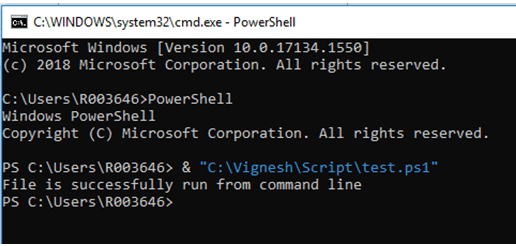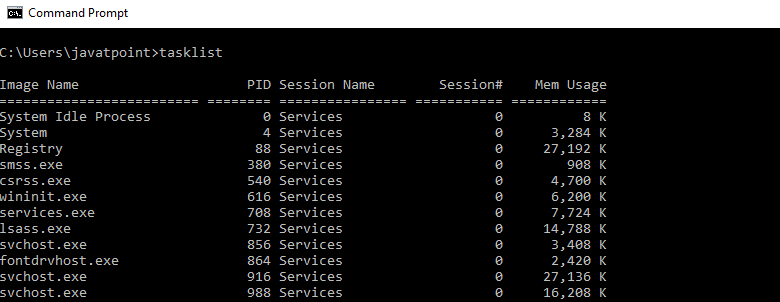
The ForEach-Object cmdlet performs an operation against every item in a specified group of input objects. When it comes to productivity, PowerShell can help you get things done with the following commands. PowerShell Commands for Getting Things Done > Set-AuthenticodeSignature somescript.ps1 cert:\CurrentUser\My -codesigning) -IncludeChain "All" -TimestampServer "" If you want to keep your work secure in production and prevent modification, use Set-AuthenticodeSignature to add an Authenticode signature to a script or file. Running CDPSvc Connected Devices Platform Service Running BITS Background Intelligent Transfer Ser. Running AppHostSvc Application Host Helper Service
#CMD C POWERSHELL UPDATE#
Running AdobeARMservice Adobe Acrobat Update Service The following example will result in an output of data from the Get-Service command that’s been piped to the Where-Object cmdlet, which then filters out everything other than the services that have been stopped: Get-Service | Where-Object Additionally, you can leverage filtering capabilities to return a specific subset of currently installed services.
#CMD C POWERSHELL WINDOWS#
If you need to know if a specific service is installed, you can append the -Name switch and the name of the service, and Windows will show the state of the service. Running ASChannel Local Communication Channel

Running ALG Application Layer Gateway Service The output will look something like the following ( Status Name DisplayName You can easily access this information with the following command: Get-Service It’s also helpful to know what services are installed on the system. Similarly, if you’re working in an unfamiliar environment, you can easily find out what the current execution policy is using this command: Get-ExecutionPolicyĬheck out this thread on SuperUser for more information on configuring the execution policy in PowerShell. Unrestricted: As its name suggests, the unrestricted security level permits all scripts to run by removing all restrictions from the execution policy.Scripts created remotely are permitted to run only if they’ve been signed by a reputable publisher. Remote Signed: In this security level, any PowerShell scripts that were created locally are permitted to run.All Signed: This security level allows scripts to run only if they are signed by a trustworthy publisher.In this security level, you can only enter commands interactively. Restricted: This is the default security level which blocks PowerShell scripts from running.Developers want to be able to write and execute scripts, however, so the Set-ExecutionPolicy command enables you to control the level of security surrounding PowerShell scripts. Microsoft disables scripting by default to prevent malicious scripts from executing in the PowerShell environment. The output will look something like this ( CommandType Name DefinitionĬmdlet Add-Content Add-Content ] Get-Command is an easy-to-use reference cmdlet that brings up all the commands available for use in your current session.

These basic PowerShell commands are helpful for getting information in various formats, configuring security, and basic reporting. The commands listed below are a good starting point for any developer, but to fully realize the benefits, you should master parameters and other methods as well.

The WhatIf parameter is particularly useful for testing PowerShell scripts without actually running them ( There are typically several parameters and methods available for each command.

In addition to cmdlets, there are dozens of parameters and methods that help you get the most out of your scripts.


 0 kommentar(er)
0 kommentar(er)
